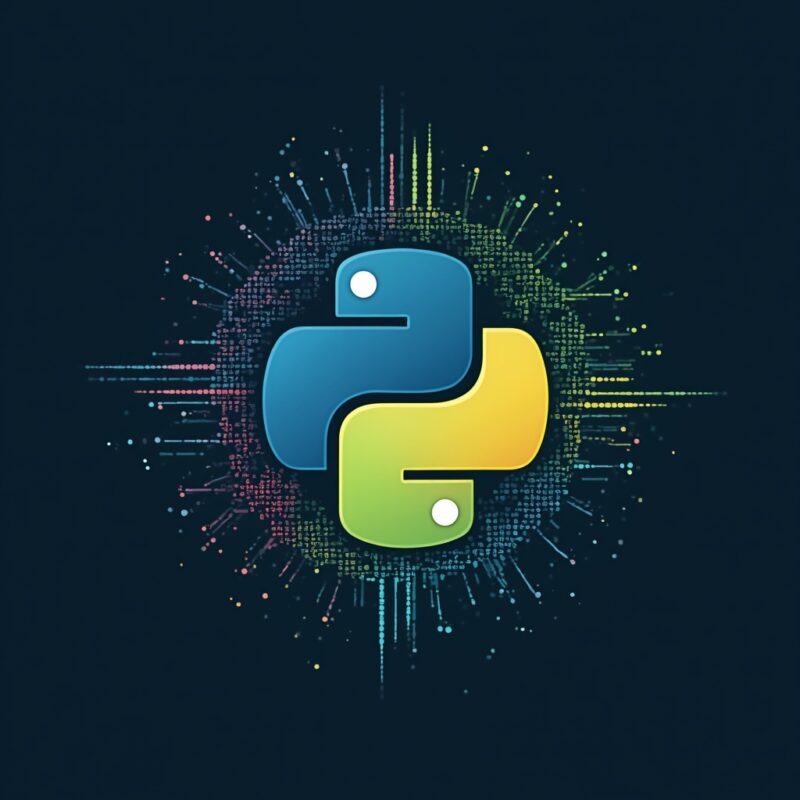AI Text Generator: Top Tools to Automate Your Writing

Looking for the best AI text generators? The top tools for automating your writing in 2024 include ChatGPT for versatile content, Jasper AI for marketing copy, Sudowrite for creative work, and Compose AI for real-time assistance—each excelling for specific content types and writing needs.
The Writing Robot Revolution (That Actually Doesn’t Suck)
Last Tuesday, I stared at a blank document for 45 minutes trying to write an email to a client. Not a complicated email. Just a simple “Hey, here’s what we discussed” follow-up. But my brain decided that was the perfect moment to wonder if penguins have knees instead of forming coherent sentences.
Sound familiar? We’ve all been there—writer’s block, deadline panic, or just plain not knowing how to start. That’s why AI text generators have exploded in popularity. They’re like having a writing buddy who never gets distracted by random penguin anatomy questions (they do have knees, by teh way—just hidden in their bodies).
But with dozens of AI writing tools flooding the market, how do you know which one actually fits your specific needs? Let’s break it down…
What Is an AI Text Generator?
AI text generators are software tools powered by machine learning algorithms that can produce human-like written content based on prompts or instructions. They’ve evolved from basic autocomplete to sophisticated writing assistants that can draft emails, create marketing copy, generate creative stories, or even help with academic papers.
These tools use natural language processing (NLP) to understand context and generate relevant content, often learning from massive datasets of existing writing to mimic human communication patterns.
The best part? You don’t need a PhD in computer science to use them. Most modern AI writers have user-friendly interfaces where you simply describe what you need, and the AI does the heavy lifting.
Why Different AI Writers Excel at Different Things
Not all AI text generators are created equal. Just like you wouldn’t use a hammer to change a lightbulb, different AI writing tools shine in different scenarios:
General Purpose Workhorses
- ChatGPT: The Swiss Army knife of AI writing. Great for brainstorming, drafting, and problem-solving across multiple domains. The free version is surprisingly capable for everyday writing tasks.
- Claude: Excels at nuanced, thoughtful responses with better contextual understanding. Particularly good for complex writing that requires careful reasoning.
- Compose AI: Focuses on real-time writing assistance that works within your existing tools, helping you write faster without switching applications.
Marketing and Content Creation Specialists
- Jasper AI: The marketing department’s best friend. Designed specifically for creating conversion-focused copy, blog posts, and social media content with SEO in mind.
- Copy.ai: Offers specialized templates for different marketing formats (emails, ads, product descriptions) that consistently produce high-converting copy.
- Writesonic: Combines content generation with SEO optimization features, making it particularly valuable for content marketers focused on search traffic.
Learn more in
AI Paragraph Generator: Create Polished Text Blocks Fast
.
Creative Writing and Storytelling Tools
- Sudowrite: Designed by novelists for novelists. Helps overcome writer’s block with character development, plot suggestions, and atmospheric descriptions that actually feel unique.
- NovelAI: Specializes in narrative continuation and story development with fine-tuned models for fiction writing that maintain consistency.
Academic and Professional Writing
- QuillBot: Excels at paraphrasing and rewriting content while maintaining meaning, particularly useful for academic writing and avoiding plagiarism.
- Wordtune: Focuses on refining and improving existing text rather than generating it from scratch, making it ideal for professionals polishing important documents.
How to Choose the Right AI Writing Tool
When I first started using AI writing tools, I made the classic mistake of thinking “more expensive = better.” Dropped $49 on a premium subscription only to realize it was terrible for my specific needs. Don’t be like me. Consider these factors instead:
Match the Tool to Your Primary Use Case
- Content marketers: Prioritize tools with SEO features, tone adjustment, and factual accuracy (Jasper, Writesonic)
- Fiction writers: Look for creativity, character consistency, and plot development (Sudowrite, NovelAI)
- Students/researchers: Focus on paraphrasing, citation management, and fact-checking capabilities (QuillBot, Academic Writer)
- Business professionals: Seek tools with templates for business documents, tone formality controls, and integration with workplace apps (Copy.ai, Compose AI)
Consider Your Technical Comfort Level
Some AI writing tools require more technical knowledge than others. If you’re not comfortable crafting perfect prompts or navigating complex interfaces, opt for tools with guided experiences:
- Beginner-friendly: Copy.ai, Jasper, QuillBot
- Intermediate: ChatGPT, Claude, Writesonic
- Advanced users: Direct API access, custom-trained models
Budget Considerations
AI writing tools range from free to several hundred dollars monthly. The good news is that you can find solid options at every price point:
- Free options: ChatGPT (basic), Compose AI (limited), QuillBot (basic)
- Budget-friendly ($10-25/month): Copy.ai, Writesonic starter plans
- Premium ($25-99/month): Jasper AI, advanced ChatGPT Plus, Sudowrite
- Enterprise ($100+/month): Custom solutions with dedicated support
Common Myths About AI Writing Tools
Let’s address some misconceptions that might be holding you back:
Myth 1: “AI writing is always obvious and robotic”
Not anymore! Modern AI can produce remarkably human-like text. The key is learning to guide it effectively with your prompts. Today’s best AI writers can adapt to different tones, styles, and even mimic specific writing voices when properly instructed.
Myth 2: “AI will just write everything for me”
AI writing tools aren’t magic “content buttons” (though that would be amazing). They’re more like super-powered collaborators. The best results come from treating AI as a partner in your writing process—providing guidance, editing its output, and adding your unique insights.
Myth 3: “All AI writing tools are basically the same”
As we’ve seen, different AI writers are optimized for different use cases. Using a general-purpose tool for specialized writing needs is like using a screwdriver to pound in nails—it might work in a pinch, but you’re gonna have a bad time with anything complex.
Learn more in
Prompt engineering examples
.
Real-World Examples: AI Text Generators in Action
Let’s look at how different professionals are using AI writing tools to supercharge their workflow:
Case Study: Marketing Agency Scales Content Production
Digital marketing agency Horizon Media needed to produce 4x more blog content without expanding their team. They implemented Jasper AI with a specific workflow:
- Content strategists created detailed outlines and research briefs
- Jasper generated initial drafts based on those briefs
- Human editors refined the AI output, adding client-specific insights and voice
- Result: 300% content increase with only 15% more time investment
Case Study: Fiction Author Overcomes Writer’s Block
Fantasy novelist Mia Chen was stuck halfway through her second novel. Using Sudowrite’s specialized fiction tools:
- She used the character expansion feature to better understand her protagonist’s motivations
- Generated several alternative plot directions when stuck at a crucial turning point
- Used the “describe” function for vivid scene-setting without generic description
- Result: Completed her manuscript two months ahead of deadline with consistent reader feedback that it was better than her first book
Case Study: Student Improves Research Paper Quality
Graduate student James used QuillBot and ChatGPT to enhance his academic writing process:
- Utilized ChatGPT to brainstorm research questions and outline structure
- Wrote initial drafts himself, incorporating research findings
- Used QuillBot’s paraphrasing tool to refine awkward sentences and improve clarity
- Result: Higher grades on papers and reduced writing time by approximately 30%
Tips for Getting the Most from AI Text Generators
After experimenting with pretty much every AI writing tool on the market (my credit card company probably thinks I have a problem), I’ve discovered some universal truths about getting better results:
Be Specific in Your Prompts
The number one mistake? Vague prompts. “Write about dogs” will get you generic content. But “Write a 300-word blog post about helping senior Labrador Retrievers with joint pain, targeting pet owners aged 50+, with a compassionate but practical tone” will generate something actually useful.
Edit and Refine AI Output
Think of AI text as a collaborative first draft. Always review for factual accuracy, brand voice consistency, and logical flow. The most effective approach combines AI efficiency with human judgment.
Use AI for What It Does Best
- Excellent for: Overcoming blank page syndrome, generating outlines, brainstorming ideas, creating first drafts, rephrasing content
- Less reliable for: Fact-checking, industry-specific technical content, highly original creative concepts
What’s Next in AI Writing Tools?
The AI writing landscape is evolving faster than anyone can keep up with (seriously, I had to update this article three times while writing it because new tools launched). Here’s what to watch for:
- Multimodal capabilities: Tools that can analyze images and videos to generate relevant text
- Deeper specialization: More AI writers custom-built for specific industries and content types
- Better factual accuracy: Real-time access to current information to reduce hallucinations
- More seamless collaboration: Enhanced human-AI writing workflows that feel like working with a smart assistant rather than using a separate tool
Learn more in
AI Answer Generator: Get Accurate Responses Instantly
.
Finding Your Perfect AI Writing Partner
The best ai text generator isn’t universally the most expensive or the one with the most features—it’s the one that fits your specific writing needs, technical comfort level, and budget. Many offer free trials, so experiment with a few before committing.
Remember that AI writing tools aren’t replacing human creativity; they’re amplifying it. They handle the heavy lifting so you can focus on what humans do best—adding unique insights, emotional nuance, and the authentic voice that no AI can truly replicate (at least not yet!).
What’s your experience with AI writing tools? Have you found one that perfectly fits your needs, or are you still searching for your ideal AI writing partner? The landscape keeps evolving, but the perfect tool for you is definitely out there.












